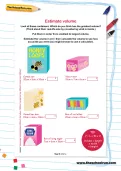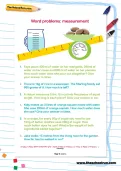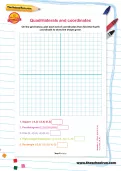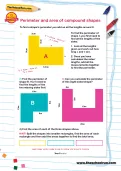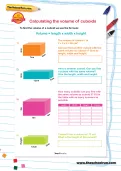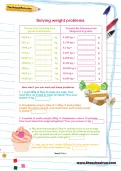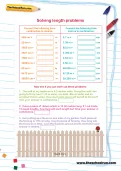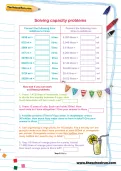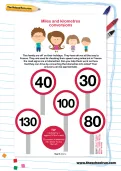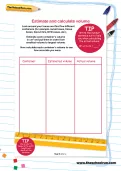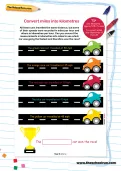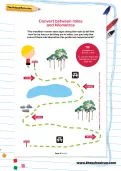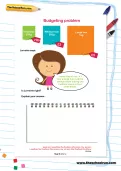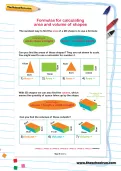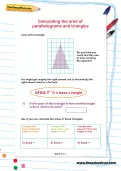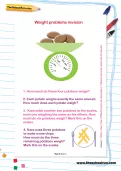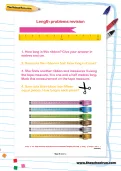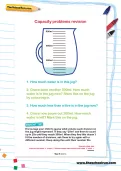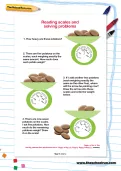Year 6 Weights and measurements worksheets
Free worksheets: Weights and measurements, KS2, Y6
You’ll need to login or Register first to access these worksheets for free.
Once you’ve tried out our free worksheets, why not explore all our resources (1000s of worksheets, interactive tutorials, learning packs and more) with a 14-day FREE trial subscription.
Calculating perimeters
A Year 5 and 6 printable worksheet created by an experienced teacher to help your child practise calculating perimeters.
To find the perimeter of a shape you must add up the lengths of each of the sides. Can your child calculate the perimeters of these common shapes?
To find the perimeter of a shape you must add up the lengths of each of the sides. Can your child calculate the perimeters of these common shapes?
Estimate volume
Look at these containers. Which do you think has the greatest volume? (Think about their real-life size by considering what is inside.) Put them in order from smallest to largest volume. Estimate the volume in cm3, then calculate the volume to see how accurate you were.
Word problems: measurement
Can you tackle these tricky word problems? They are all about measurement...
Quadrilaterals and coordinates
On the grid, plot each set of coordinates then find the fourth coordinate to draw the shape given.
Perimeter and area of compound shapes
Can you find the perimeter of this shape? You’ll need to find the lengths of the two missing sides first. Then see if you can calculate the perimeter of this eight-sided shape? Finally, can you find the area of these shapes?
Calculating the volume of cuboids
Do you remember the formula for calculating the volume of a cuboid? See if you can work out the volume of these cuboids, as well as their length, width and height.
Solving weight problems
Can you convert these from grams to kilograms then from kilograms to grams? Then see if you can answer the worded weight questions.
Solving length problems
Can you convert these from centimetres to metres: then from metres to centimetres? Then see if you can answer the worded length questions.
Solving capacity problems
Can you convert these from millilitres to litres then from litres to millilitres? Then see if you can answer the worded capacity questions.
Miles and kilometres conversions
This family are off on their holidays. They have driven all the way to France. They are used to checking their speed using miles but in France the road signs are in kilometres! Can you help them work out how fast they can drive by converting the kilometres into miles? Your answers can be approximate.
Estimate volume
Look at these containers. Which do you think has the greatest volume? (Think about their real-life size by considering what is inside.) Put them in order from smallest to largest volume. Estimate the volume in cm3, then calculate the volume to see how accurate you were.
Estimate and calculate volume
Look around your house and find five different containers (for example cereal boxes, tissue boxes, biscuit tins, DVD cases, etc.). Estimate each container’s volume in cm3 and put them in order from smallest volume to largest volume. Now calculate each container’s volume to see how accurate you were.
Convert miles into kilometres
All these cars travelled the same distance, but some of their speeds were recorded in miles per hour and others in kilometres per hour. Can you convert the measurements in kilometres into miles to see which car was going the fastest and therefore won the race?
Convert between miles and kilometres
This marathon runner sees signs along the route to tell him how far he has run but they are in miles; can you help him convert them into kilometres (his preferred measurement)?
Budgeting problem
Lorraine needs 1kg of rice. Will be it cheaper for her to buy a large box or two medium boxes or four small boxes? Can you help her work out her budgeting problem?
Volume of cubes and cuboids
The volume of a cube / cuboid = length x height x width. Look at the following shape pairs and estimate which has the bigger volume. Work out the volume with the formula; were you right?
Formulas for calculating area and volume of shapes
The quickest way to find the area of a 2D shape is to use a formula. Can you use the right formula to find the areas of these shapes? With 3D shapes we can also find the volume, which
means the quantity of space taken up by the shape. Can you use the right formula to find the volumes of these cuboids?
means the quantity of space taken up by the shape. Can you use the right formula to find the volumes of these cuboids?
Calculating the area of parallelograms and triangles
A Year 6 maths worksheet, created by an experienced teacher, on calculating the area of parallelograms and triangles.
To work out the area of a triangle, we use the formula: area = ½ x base x height. See if you can calculate the areas of these triangles.
To work out the area of a triangle, we use the formula: area = ½ x base x height. See if you can calculate the areas of these triangles.
Weight problems revision
It's going to be chips tonight if you can work out these potato weight problems!
Length problems revision
Let's revise some length problems. How long is this ribbon? Give your answer in metres and cm. How long would it be if it were cut in half?
Capacity problems revision
Can you answer these tricky capacity problems? You can always fill up a measuring jug with water to help.
Reading scales and solving problems
A KS2 numeracy worksheet created by an educator to help your child practise reading scales and solving problems.

